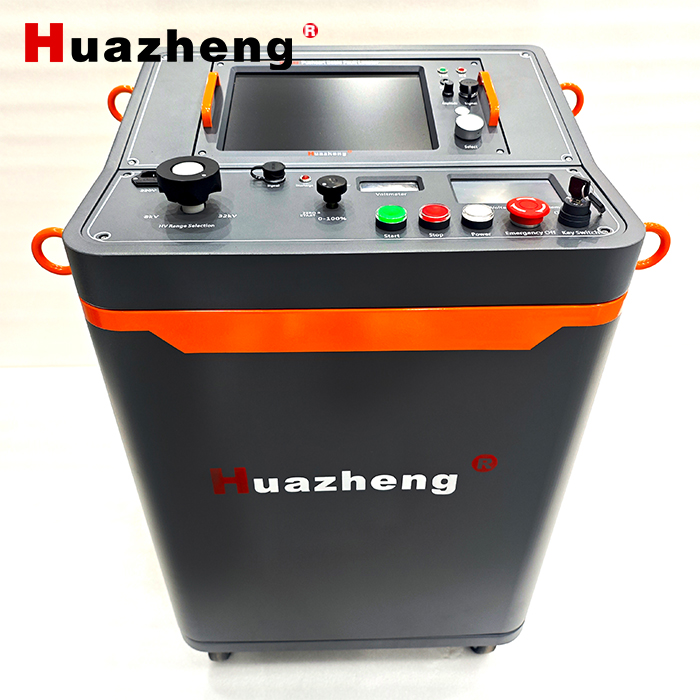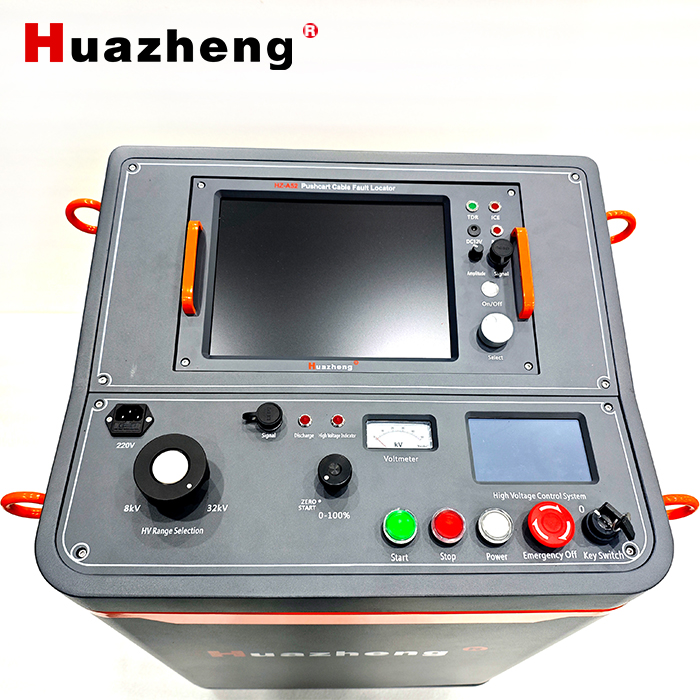![]() Email:sales04@bdhuazheng.com
Email:sales04@bdhuazheng.com
![]() Cellphone/ wechat/Whatsapp /Skype: +86 18330222302
Cellphone/ wechat/Whatsapp /Skype: +86 18330222302
1. Precautions for Preparation Before Testing
It is necessary to confirm the reliable grounding of the equipment, and the grounding resistance must meet the requirements (usually ≤ 4 Ω) to avoid the risk of electric shock during high-voltage testing.
Check the appearance of the equipment, test the cables and high-voltage leads. If there are any damages, aging, fractures, etc., they should be replaced immediately to prevent high-voltage leakage.
Verify the parameters of the tested cable (model, section, length, laying method), and set matching test voltage, pulse width, and other parameters based on the fault type (open circuit, short circuit, outer sheath fault, etc.) to avoid equipment damage or test failure caused by improper parameters.
Clean up the testing site, remove flammable and explosive materials around, designate a safe testing area, and prohibit unrelated personnel from entering.
2. Testing process operation specifications
Operators need to wear protective equipment such as insulated shoes and gloves, and do not touch high-voltage output terminals, test cable joints, and other high-voltage parts throughout the process.
When connecting the test cable, it is necessary to first turn off the power and discharge it to ensure that there is no residual charge in the equipment. The cable connection should be firm and the polarity should be correct to avoid poor contact and discharge sparks.
During the testing process, real-time observation of the waveform and fault distance data displayed by the equipment is necessary. If there is waveform disorder, it is necessary to investigate the interference source (such as staying away from high-power appliances, adjusting the testing frequency), or check whether the cable connection is loose.
In the high-voltage output state, it is forbidden to plug and unplug test cables or switch parameters. If adjustments are needed, the high-voltage output must be turned off and discharged first to prevent high-voltage arc burns or equipment damage.
3. Fault location and on-site safety
When positioning outdoors, attention should be paid to terrain safety and avoid working in environments with water accumulation, steep slopes, and flammable and explosive materials. Equipment waterproof protection should be taken during rainy weather testing.
When using path detectors and fixed-point devices, avoid collisions between the probe and sharp objects. The acoustic sensor should be tightly attached to the ground to ensure sensitive signal reception and reduce positioning errors.
When a fault is located, if it involves cable discharge, a safe distance (usually ≥ 5m) should be maintained from the fault point to prevent discharge sparks from burning or crushed stones from splashing and injuring people.
4. Key points for equipment storage after testing
After the test is completed, first turn off the high voltage output, release the residual charge through the device discharge function, and then disconnect the power supply and all connecting cables.
Organize and test cables, high-voltage leads, and other accessories, check for wear and knots, and promptly repair or replace damaged parts.
Export test data and backup, turn off the device power, place the host and accessories in a portable case to avoid compression and collision, and store them in a dry, ventilated, and non corrosive gas environment.
When not in use for a long time, it is necessary to regularly charge the built-in lithium battery (once every 3 months) to prevent battery loss and damage.

